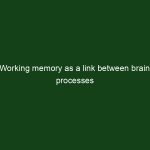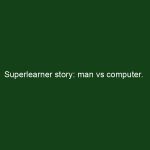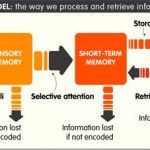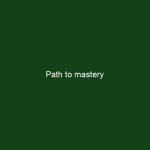Mental models are very useful for problem solving. Put simply, mental models are the set of tools that you use to think. Each mental model offers a different framework that you can use to look at life (or at an individual problem). Consider a toolbox: for every task there is a tool best suited for …
Working memory as a link between brain processes
A large part of our progress has to do with improving our working memory processing. This post explains in detail what the working memory is. Below I will try to interpret it in simple terms related to our activities. Our memory uses several very fast and small buffers to work with various types of information: …
Continue reading “Working memory as a link between brain processes”
Superlearner story: man vs computer.
Why should we train at all? It is well-known in professional circles that a good computer can already beat a great chess master. A computer can easily beat a polymath in Jeopardy game. he computers are so good in fooling humans, that for the last 10 years only a professional and experienced interrogator will know …
Generate obsessive reading habit
There is little point in reading fast unless you read a lot. Getting sucked into reading is simple and has to do with pleasure: Read the books that you enjoy reading. Enjoy the thought of reading the next book. Generate a list of stuff you would LOVE to read. Dive into reading for fun. Take …
Personal style and typology
Choosing your own personal style is hard, especially if you cannot afford 1:1 session with Anna. To help somewhat with this challenge one can use psychological typology as a guiding principle. For years the psychological typology has been measured for purposes of career selection using MBTI or big five OCEAN indicators. There is some correlation …
Getting things done
Working on your skills for a week or two is not very hard. However, to qualify for sufficient memorization and superlearning skills ~12 weeks of work are required. And once you finally qualify, this is simply a milestone in life-long learning career. This is very similar to sports. Many people are passionate during the first …
Remembering formulas
VS on Facebook: Is it a good idea to use mind maps for formulas (like in Physics, Math etc) Lev Goldentouch: Using mindmap for formulas is pretty much what a computer does. As human, I would also dual code small funny animations of each specific factor in the formula and why/how it changes the end …
Sleep hacking
Today we are going to discuss sleep hacking. For some reasons I do not fully understand, many students think that sleep is a waste of time. There are two ways of sleep hacking: (1) healthy ways to benefit from healthy sleep and (2) controversial ways to reduce sleep time. Let us make some order in …
Conciousness and attention dissociation
Many of our students read one thing while thinking about something else. This discrepancy is known as consciousness and attention dissociation and is counter-effective. For example, if you try to generate markers and worry about the quality of your markers at the same time, your attention is focused on the text, but your consciousness is …
Path to mastery
All learning follows 4 basic stages. The four steps to mastery also apply to superlearning. 1. Unconscious Incompetency. This is the phase most people begin from. Typically people read at 200wpm 30% retention and feel good about it. After years of miseducation people either do not believe they can improve or do not want to …











